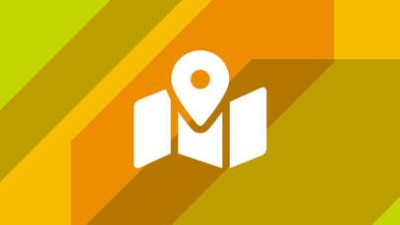Cover Letters and Experienced Resumes

Cover Letters and Experienced Resumes
- RIT/
- Career Services and Co-op/
- Alumni/
- Job Search/
- Cover Letters and Experienced Resumes
Capture the attention of employers through highlighting your experience in cover letters and resumes.
Cover Letters
The cover letter bridges the gap between your skills and experiences with the position you’re applying for. Capture the reader’s attention with your interest in the company, a voice that fits your personality, and steps on how to contact you.
A cover letter usually includes three to four paragraphs and answers the following questions:
1
First paragraph: Introduction
Who you are and why did this position pique your interest? What is the position and how did you hear about it? What in your background fits the position you’re pursuing? Did someone with connections to the company refer you to apply?
2
Second paragraph: Sell
What experiences, skills, and abilities are the most relevant to this employer? How can you prove your skills rather than state them? How can you state your strengths from academic experiences, jobs, and campus activities? Why are you the person for the job? What job post requirements connect to your experiences?
3
Third paragraph: Closing
How can you summarize your experience to focus on their needs? Are there attachments you need to refer them to? What is the best contact information to provide employers? How interested are you in meeting in person to talk more about the possibility of working with them? Will you be the one to reach out if no one responds by a certain date?
Cover Letter Checklist
-
The letter is addressed to the proper reader. If unknown, addressed to “Hiring Manager”
-
The letter is formatted with a business appropriate font, size, and layout
-
The cover letter is personalized to the specific position
-
Your writing is professional with hints of personality
-
You did not overuse the word “I” throughout the cover letter
-
The letter was read aloud and is grammatically correct and free of typos
Cover Letter Examples
- Applied Statistics and Actuarial Science BS
- Biomedical Sciences BS
- Civil Engineering Technology BS
- Computer Engineering MS
- Finance BS
- Human-Computer Interaction MS
- Industrial Engineering BS
- Journalism BS
- Business MBA
- Public Policy MS
- Telecommunications Engineering Technology MS
- Web and Mobile Computing BS
Experienced Resumes
Hiring managers will spend less than 30 seconds looking at your resume. To stand out from the competition, it is essential that your resume be the best possible representation of who you are and what you have to offer an employer.
In order to write a persuasive resume, you need to answer the following questions:
- What is the employer looking for in a potential candidate?
- What skills/qualities can you offer an employer?
- What resume format will best highlight your skills and accomplishments?
Experienced-level resumes place a higher focus on your accomplishments and achievements rather than your general duties and responsibilities. Tell a compelling story, establish your passion, and emphasize the value you will add to the company, to differentiate yourself from the competition, and demonstrate your expertise.
Determining the needs of your targeted industry and employers takes research. Use resources available, including employer website, industry reports, professional associations, and job search websites. After your research, determine what sets you apart from the competition and your personal brand. Your brand incorporates your vision, mission, strengths, and skills. Present your brand through your cover letter and resume to give employers a consistent message on what you have to offer.
Build a Resume
Your name, phone number, and email address should be at the top of the resume. You can add your home address if it’s to your advantage (local to a company you’re applying to). Consider including your personal website, if it’s professional.
The goal of a profile is to have the employer want to read the rest of your resume. In constructing your profile, be sure to include your personal brand message as well as the position you’re targeting. Use keywords and powerful statements to demonstrate your skills and qualifications relevant to the industry, company, and position.
Key accomplishments or career highlights can be incorporated into your overall summary, or some people prefer to list them separately after the summary. Use rich keywords and highlight the top skills for each job. Add quantifiable facts where possible, to show your value in actual figures.
List all your core competencies and skills related to your industry, using relevant keywords. If you have different resumes for different fields or industries, highlight the most relevant skills first. Include technical and soft skills, especially those that will transfer well into any industry. You may not match a particular position 100%, but if you have supplemental, transferable skills that are attractive to a company, you may still be considered for the job.
Formatting Tip:
- It’s important to put your most important information in the top half of the first page of your resume, where it will be seen first and will grab the attention of prospective employers.
Indicate the name of the company, dates of employment, location, and title of each position. You want to use this section to highlight your accomplishments and show what you’ve achieved at your past experiences. Past success is a good predictor of future success, which is why you want to focus on outcomes rather than daily duties. Use strong action verbs and have a consistent theme to tie in your experience with your summary. A good way to highlight your accomplishments is to use the CAR (Challenge, Actions, and Result) method, or the SMART (Situation, Metrics, Actions, Results, Tie-in) method.
Formatting Tips:
- In general, one or two pages are acceptable for a resume; if you have the material to support two pages, you should use two pages.
- Use bullets instead of paragraphs of information as it will be easy to pick out the keywords quickly.
- If you're a seasoned worker, consider listing only 15-20 years’ experience.
List all colleges from which you received degrees, listing the college name, location, type of degree and major. The longer you’ve been out of school, the shorter your descriptions should be, as experience becomes more important than education to emphasize. Add any training you’ve received since graduating from college, relevant to your field or position. This can include certifications, professional development courses, and courses that show you’re staying current in your field.
Formatting Tips:
- Place education toward the end of your resume to place a higher emphasis on your experience.
- If you’ve been out of school for a long period of time, you can remove the dates and just note the fact that you have the degree.
These sections are your opportunity to differentiate you from the competition, show what makes you uniquely qualified, and demonstrate your well-roundedness. Things you may want to include are involvement in professional associations and any consistent volunteer work or community involvement. Other extras you may want to include are presentations you’ve given, articles and papers you’ve had published, and links to samples of your work.
References are listed on a separate page, not directly on your resume. You will want to secure at least 3-5 references and they should be a mix of supervisors, co-workers, and maybe faculty if you’re a recent graduate. Manage your references by keeping your contacts up to date on your skills and accomplishments, what jobs you’re applying to, and alert your contacts that they may be contacted by hiring managers.
Resume Format
The two most frequently used resume formats are reverse chronological or functional. Choose the resume format that most effectively markets your skills and experiences.
This is the most popular format. It is most appropriate for someone with a very logical career path and demonstrates relevant skills. This format emphasizes education and job history with the most recent events listed first.
This format emphasizes transferable skills rather than experience. It is appropriate for a more seasoned individual or career changer. Depending on the job objective, group your history into broad functional skill categories. This format distracts the employer from dismissing your resume based on a past career path.
This is more of a sound bite, which focuses on your success stories and accomplishments. Your education, work history, and leadership are included, but minimized. This format is meant for networking events, informational interviews, or other person-to-person contacts you may make. Save your complete resume for applications, contacting hiring managers, and interviews. Networking resume sample
Infographics - Some creative individuals are experimenting with infographic resumes, which demonstrate their knowledge of current trends, depending on their industry. Infographic resume templates and samples
Showcasing Work - Computing industry experts may create code samples in Github and creative industry experts may create resumes through video and present work samples through online portfolios and personal websites. Know your industry trends to make your past work stand out from the competition.
Resume Checklist
-
The resume is formatted with a business appropriate font, size, and layout
-
Your name is emphasized at the top of the page followed by your contact information
-
The resume design can be read and printed easily
-
You saved the resume in multiple formats (PDF, Word)
-
Your resume file is small to prevent email issues to employers (around 500kb is a good size to aim for)
-
You used keywords that will stand out to employer applicant tracking systems
-
Your resume was read aloud, grammatically correct, typo-free, and reviewed by a Career Services coordinator





